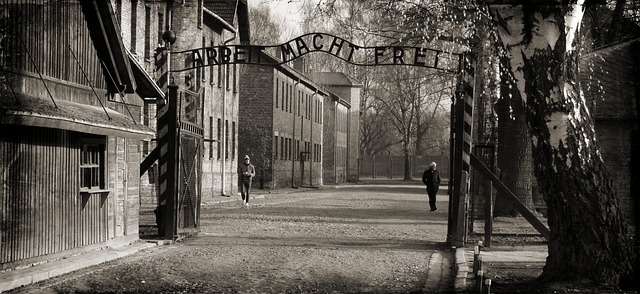Why is the memory of the victims of the Holocaust so promoted in Poland and preserved, traditionally, much more than in other countries around the world? First of all, the very fact that these camps are located on our territory and that we have the possibility of making an excursion there easily to see with our own eyes the tragedies that took place there, reveals a lot to us. On the other hand, the fact of the camp’s enormous significance in the Polish national consciousness and collective memory is almost completely unknown in the West.

How do foreigners approach the history of Auschwitz?
The information that people of Jewish origin, but also Poles, died in this camp is, unfortunately, very often omitted and falsified, and some are even regarded as propaganda and Christianization. Generally very little is known, that much earlier before the Nazi soldiers and rulers began to execute their plan of final extermination in Auschwitz camp concentration, called the plan of the final solution, they already began to send their Poles, mainly political prisoners, who stayed and perished almost to the end of its existence.
From what is known, the Jews were taken to camps with whole families, while the Poles were brought alone, although surely there were and are known cases when several members of a family were arrested and deported. This in itself meant that at least some members of the family would remain at home, outside the horrible wires and torments of the camp, in freedom, if such a situation can be defined at all for people under Nazi occupation.
So people knew very well what had happened and what fate awaited the members of their families, also probably they remained without any hope, for friends or acquaintances. After mass roundups were carried out in Warsaw, official reports with data of people transported to the camp were sent out, almost the whole Warsaw knew in real time what was the fate of their fellow residents. According to the data that is given officially, a total of almost 150 thousand Polish prisoners were deported to Auschwitz, three quarters of whom died. For a time, the camp authorities permitted only Poles to send letters, and messages, to their friends and families, which, although always censored, reached their intended recipients. In the case of the death of a person of Polish descent, the camp administration sent an official message to the family informing them that the person had died.
The worst experiences of the Jews
It is not surprising that the concentration camp became for Jews the symbol of the Holocaust, or as it is called in their Hebrew language, the so-called Shoah. For they constituted 90% of its victims. Why exactly this camp, Auschwitz-Birkenau, and not other mass extermination camps located in other parts of Poland, such as Belzec, Sobibor, or Treblinka, in which, after all where almost exclusively Jews also died? Many reasons and circumstances contributed to this opinion.
One of them was the fact that Auschwitz at that time simultaneously had two functions-a concentration camp and a camp for the total extermination of the Jews. The entire plan was preconceived and scrupulously executed. Most of the Jews sent here died in the gas chambers immediately after arrival.
How do we remember the Jews today?
Nowadays, a well-known and current form of preserving the memory of the victims killed during the Holocaust is the so-called March of the Living, organized annually in Poland, with the participation of several thousand groups of Jewish and Polish youth, as well as visitors from all over the world. Participants of the March cover long distances marching to the places of Shoah, starting from Auschwitz-Birkenau and showing their opposition to the crime of genocide through singing songs, banners, disguises and prayers.
Adults also take an active part in these commemorations and make many donations and foundations for the construction of monuments and museums, which seem to be successful in actively integrating Jews and creating a sense of pride in belonging to the Jewish people.
Science also remembers the dead
An example of the fact that the symbolism and meaning of Auschwitz is still important for the identity of contemporary society and humanity is evidenced by the frequent references to it in all fields of science, not only ethics, theology and philosophy. The need for an up-to-date understanding of moral obligations and national and interpersonal relations is often analyzed precisely in the context of an approach to the history and symbolism of the Auschwitz-Birkenau museum. One can encounter such expressions as “Christian theology after Auschwitz”.
How to get to the place to see the camp?
If you choose to go there by car, you can get there in a very easy way on the main highway. There is paid parking for visitors near the Auschwitz Museum. This is a good solution for tourists who have their own car, or local families with children who want to visit this place. There is no age limit for entering the museum, however, it is not recommended to visit with small children as the place is not very pleasant to the eyes and may cause a little shock to the child. Among other things, you will visit the famous wall of death, which is not quite suitable for small children.
However, if you want to explore the camp in detail and learn about interesting facts, the history of people who were there, or how the camp was created and who managed it, it is worth opting for an organized Auschwitz tour with an experienced guide. Many private companies from Krakow like JTP Group offer excellent deals tailored for each tourist, which include just a tour with a pilot, transfer, and food.
It is also possible to travel by public transport from Krakow, its surroundings, or the city of Katowice. The cheapest option is to take the train, but buses and coaches are also not expensive.